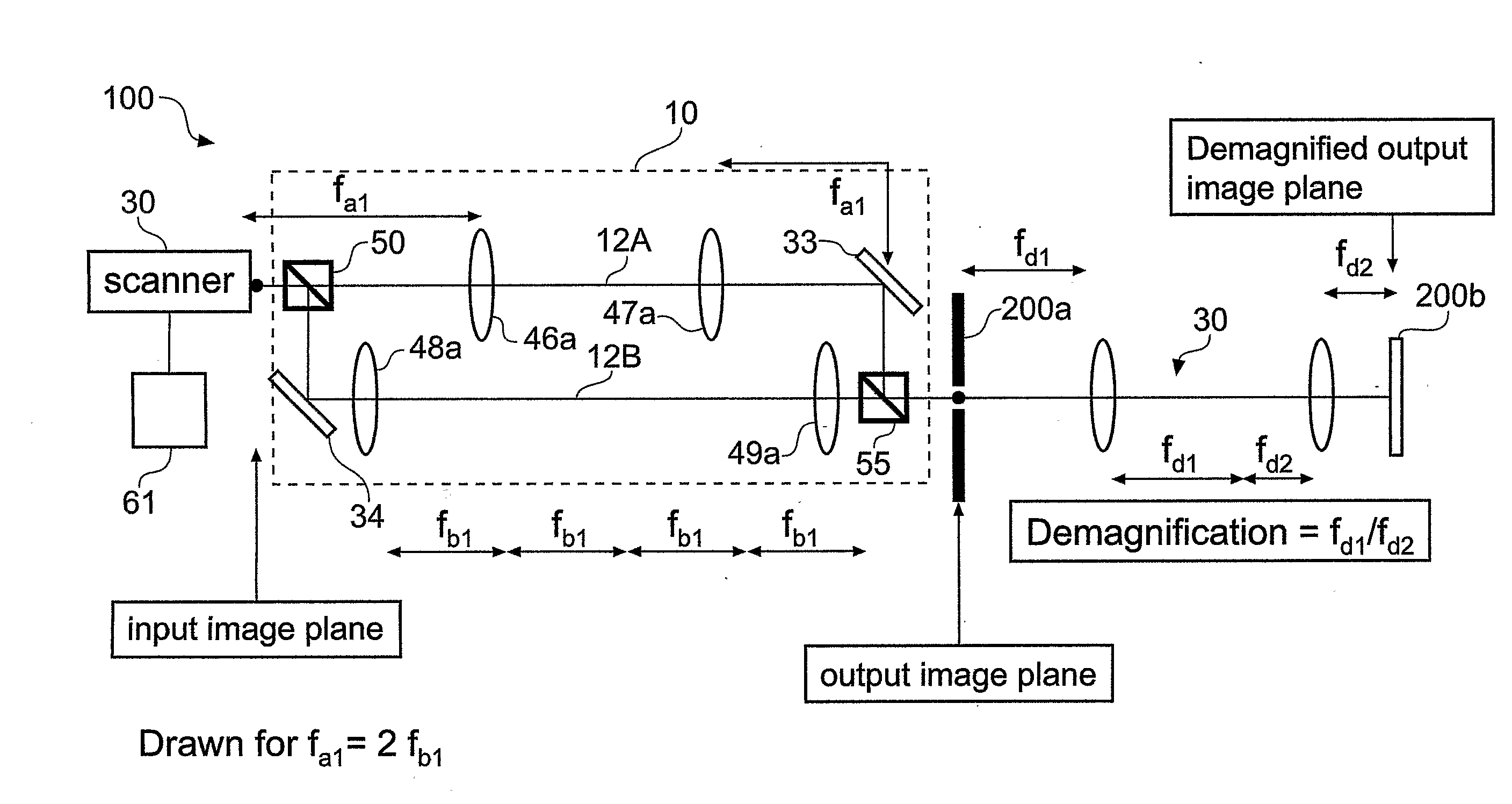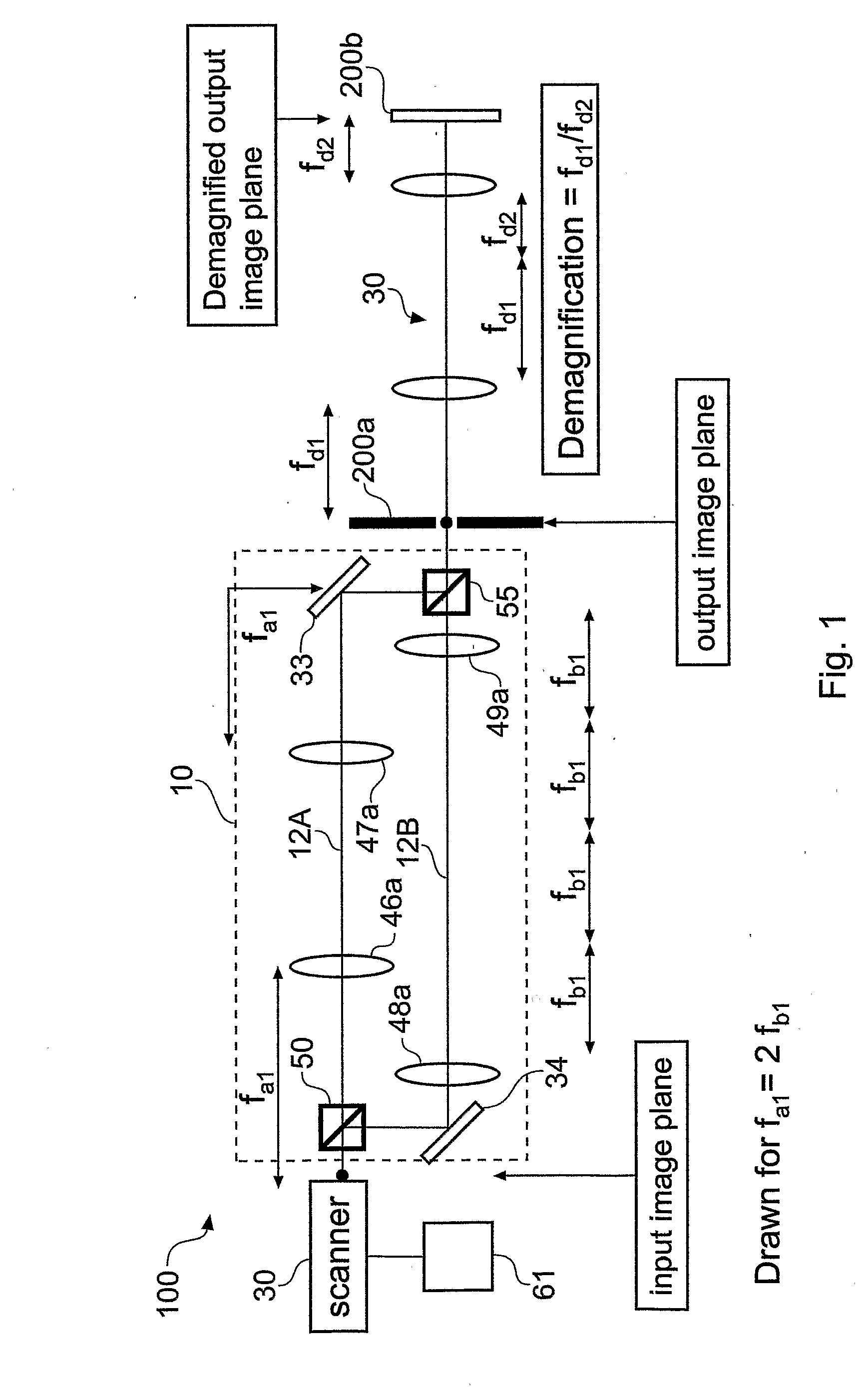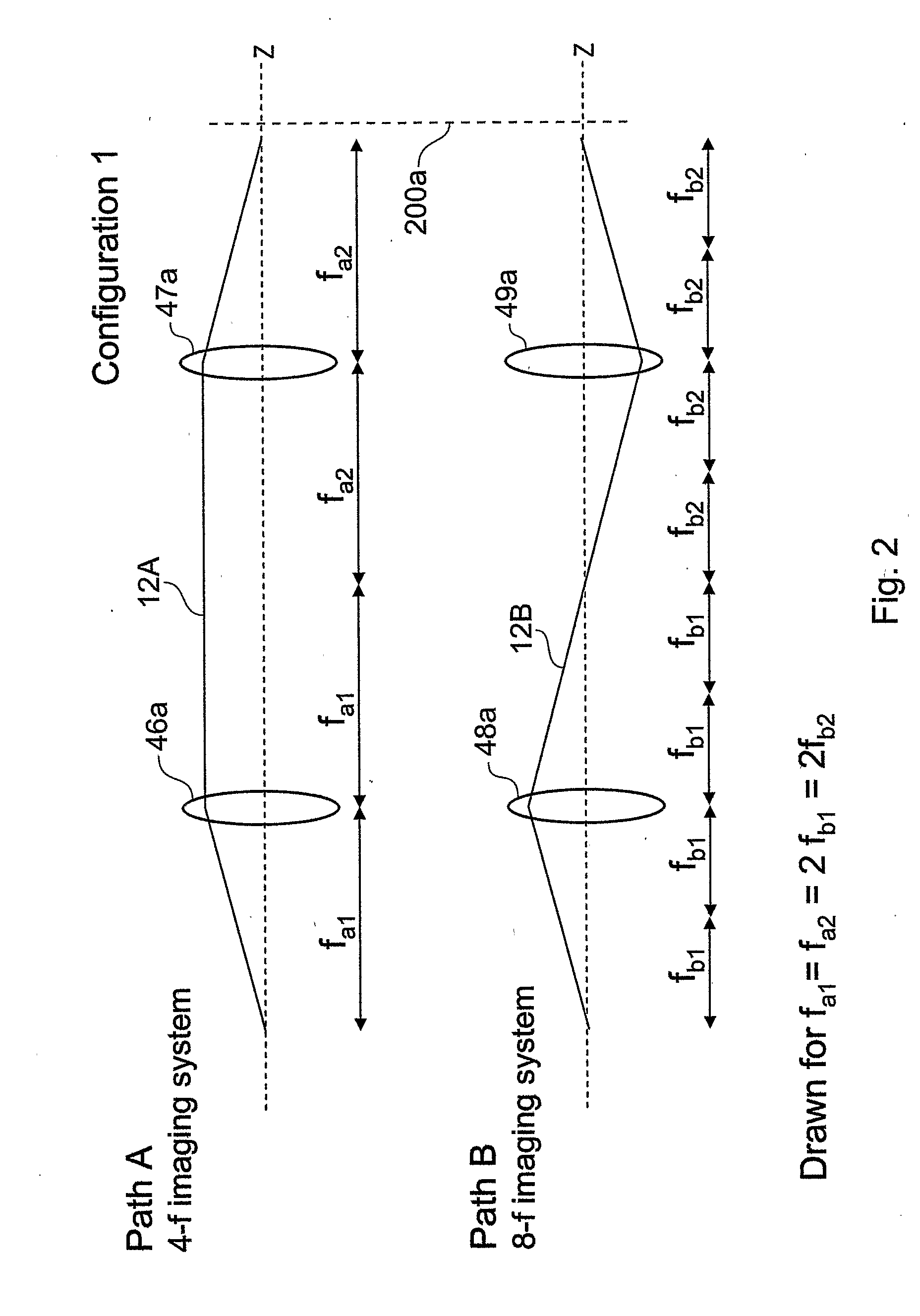Optical Device, an Optical System and a Method of Manufacturing a Holographic Optical Element
a technology of optical elements and optical devices, applied in the field of optical devices, optical systems and methods of manufacturing holographic optical elements, can solve the problems of beams, difficult to maintain two, and difficult to achieve, and achieve the effects of greatly reducing digital hologram recording times, high speed, and effective rotation
- Summary
- Abstract
- Description
- Claims
- Application Information
AI Technical Summary
Benefits of technology
Problems solved by technology
Method used
Image
Examples
Embodiment Construction
[0061] Referring to the Figures generally, in which like parts bear the same reference numerals, there is shown a device 10 incorporated in an optical system 100 for producing a hologram (not shown) at an output plane 200. The output plane 200 may be located at either of two positions 200a or 200b in dependence upon whether an image reduction device is included.
[0062] The optical system 100 includes a modulated laser 60 for producing a coherent light beam 12 and a scanner 30 for deflecting the light beam 12 in accordance with control signals from a controller. A photoresist coated plate or other holographic supporting medium is located at the output plane 200a or 200b and it is here where the hologram is formed. The photoresist coated plate is typically supported so that relative displacement is achieved between the system and the photoresist coated plate (or other holographic supporting medium), so that pixels can be defined at different locations on the photoresist coated plate. ...
PUM
 Login to View More
Login to View More Abstract
Description
Claims
Application Information
 Login to View More
Login to View More - R&D
- Intellectual Property
- Life Sciences
- Materials
- Tech Scout
- Unparalleled Data Quality
- Higher Quality Content
- 60% Fewer Hallucinations
Browse by: Latest US Patents, China's latest patents, Technical Efficacy Thesaurus, Application Domain, Technology Topic, Popular Technical Reports.
© 2025 PatSnap. All rights reserved.Legal|Privacy policy|Modern Slavery Act Transparency Statement|Sitemap|About US| Contact US: help@patsnap.com



